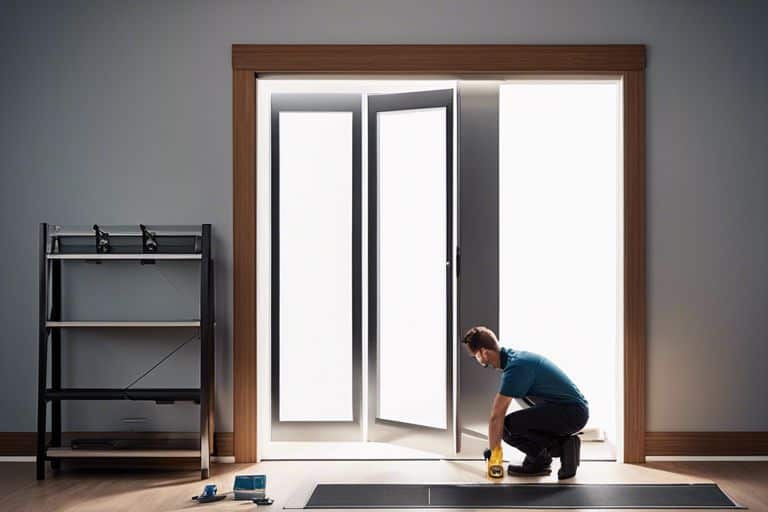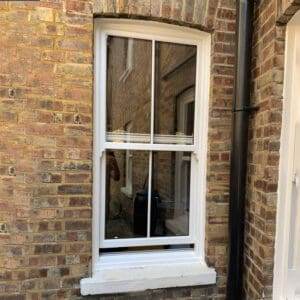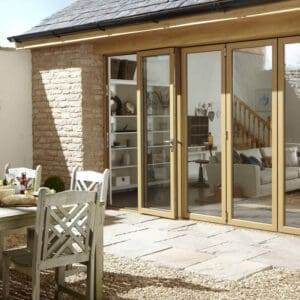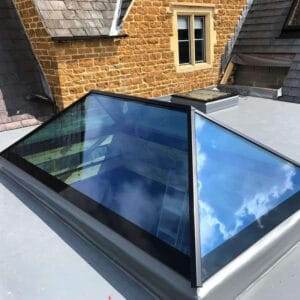Anticipating a sliding door installation might seem like a straightforward task; however, there are several critical factors to consider to ensure a successful and safe process. It is crucial to carefully measure the space where the door will be installed to avoid costly and time-consuming errors. Additionally, understanding the weight-bearing capabilities of the installation area is essential to prevent potential hazards. Furthermore, being aware of the materials and tools required for the installation is vital for a smooth and efficient process. This informative blog post will provide you with the necessary preparation steps and safety precautions to consider before diving into a sliding door installation project.
Key Takeaways:
- Measure Twice: Accurate measurements are crucial for a successful sliding door installation.
- Choose the Right Type: Consider the space and desired functionality when selecting the type of sliding door.
- Prepare the Opening: Ensure the area for installation is level and free from any obstructions.
- Professional Installation: Hiring a skilled installer can save time and ensure a proper fit for the sliding door.
- Maintenance: Regular maintenance and care will extend the lifespan of the sliding door.


Assessing Your Space
Before you embark on a sliding door installation project, it’s crucial to assess your space carefully. By doing so, you can ensure that the installation process goes smoothly and that your new sliding door fits perfectly.
Measuring the Doorway
Start by measuring the doorway where the sliding door will be installed. Measure the width, height, and depth of the space to ensure that your new door will fit properly. Take accurate measurements multiple times to avoid any errors that could lead to a poorly fitting door.
Once you have the measurements, consider the size of the door you wish to install. Ensure that there is enough space for the door to slide open and closed without any obstructions. This step is crucial to guarantee a smooth operation and positive functionality of your sliding door.
Identifying Potential Obstructions
Identifying potential obstructions in the doorway area is essential to prevent any dangerous situations and ensure the smooth operation of your sliding door. Look out for any protruding pipes, electrical outlets, or built-in furniture that could obstruct the path of the sliding door.
Additionally, pay attention to any uneven flooring or baseboards that may interfere with the installation process. These potential obstructions should be dealt with before the installation begins to ensure a seamless and safe process.
Considering these factors and addressing any potential obstructions is critical to a successful sliding door installation project.
Choosing the Right Sliding Door
When it comes to installing sliding doors, it’s essential to select the right one for your space. Understanding the steps of sliding glass door installation is crucial, as it will influence your choice of sliding door.
Types of Sliding Doors
There are various types of sliding doors available in the market, including patio doors, pocket doors, bypass doors, and bifold doors. Each type offers its own unique features and benefits. This information is presented in a table below for easy comparison. This allows you to make an informed decision based on your specific requirements.
| Patio Doors | Pocket Doors |
| Bypass Doors | Bifold Doors |
This table helps in recognising the differences between each type of sliding door and their suitability for your installation needs.
Factors to Consider: Material, Style, and Insulation
When choosing a sliding door, you need to consider factors such as material, style, and insulation. The material of the door affects its durability and maintenance, the style complements the overall aesthetics of your space, and the insulation contributes to energy efficiency. Recognising these crucial elements will guide you towards selecting the right sliding door for your home.
- Material
- Style
- Insulation
Recognising the significance of these factors will ensure that you make an informed decision that aligns with your requirements for a sliding door that is durable, stylish, and energy-efficient.
Necessary Tools and Materials
When preparing for a sliding door installation, it’s essential to have the right tools and materials at hand. To ensure a successful installation, it’s important to gather all the necessary equipment and supplies before starting the project. For a detailed guide on how to install a sliding patio door yourself, you can refer to How to Install a Sliding Patio Door Yourself.
List of Required Tools
The list of necessary tools for a sliding door installation includes measuring tape, level, screwdriver, drill, saw, caulking gun, and safety goggles. These tools are essential for accurate measurements, precise cutting, and secure fastening during the installation process. It’s important to have high-quality tools to ensure a smooth and efficient installation.
Selecting the Best Materials for Installation
When selecting materials for a sliding door installation, it’s crucial to choose high-quality frames, durable glass panels, and sturdy hardware. The materials should be able to withstand outdoor elements and provide long-lasting performance. It’s advisable to opt for materials that offer energy efficiency and enhanced security features to maximise the benefits of the installation.
It’s important to consider the climate and location when selecting materials, as they should be able to withstand weather conditions and provide insulation for the interiors. Choosing the right materials ensures a reliable and durable sliding door installation that enhances the functionality and aesthetics of the property.
The Installation Process
When it comes to installing sliding doors, it is important to understand the process involved to ensure a successful and efficient installation. From preparing the work area to following a step-by-step installation guide, each stage plays a crucial role in the overall outcome of the project.
Preparing the Work Area
Before commencing the installation, it is imperative to prepare the work area to ensure a smooth and hassle-free process. This involves clearing the space around the installation site, removing any obstacles that may hinder the installation, and ensuring that the area is clean and free from any debris. Additionally, it is important to have all the necessary tools and materials readily available to avoid any interruptions during the installation process.
Step-by-Step Installation Guide
Following a step-by-step installation guide is essential for the successful fitting of sliding doors. This includes carefully measuring the dimensions of the door frame, aligning the tracks and panels, and securing the doors in place. Each step should be carried out meticulously to ensure a seamless installation process.
The most important aspect of the installation process is to carefully measure the dimensions of the door frame to avoid any fitting issues. However, it is dangerous to proceed without ensuring that the area is clear from any obstacles or debris to prevent any accidents. Overall, following a step-by-step installation guide will lead to a positive outcome for the sliding door installation.
| Important Aspect | Carefully measuring the dimensions of the door frame |
| Dangerous | Proceeding without ensuring the area is clear from obstacles and debris |
| Positive Outcome | Following a step-by-step installation guide |
Post-Installation
Checking the Door Alignment
Once the sliding door installation is complete, it is crucial to check the door alignment to ensure it functions properly. Start by opening and closing the door to see if it moves smoothly along the track. Look for any uneven gaps or resistance when operating the door. If you notice any issues, it may indicate that the door is not aligned correctly.
Next, examine the top and bottom of the door to see if they are parallel with the frame. Use a spirit level to check for any discrepancies. Adjust the door’s position as necessary to ensure it is properly aligned within the frame. Proper alignment is essential for the long-term functionality of the sliding door.
Finishing Touches and Cleanup
After confirming the door alignment, it’s time to focus on the finishing touches and cleanup. Seal any gaps around the door frame to prevent drafts and improve energy efficiency. Additionally, apply a protective finish or paint to the door and frame to enhance their durability and aesthetic appeal.
Finally, thoroughly clean the surrounding area to remove any debris or construction materials. Pay close attention to the tracks and rollers, ensuring they are free from any obstructions that could affect the door’s operation. A well-maintained sliding door will provide years of reliable use.
For additional tips on applying the protective finish or paint, refer to the manufacturer’s guidelines for the specific sliding door materials.

Maintenance and Care for Sliding Doors
Routine Maintenance Tips
When it comes to ensuring the longevity and proper function of your sliding doors, regular maintenance is key. Here are some routine maintenance tips to keep in mind:
- Regularly clean the tracks and rollers to remove any dirt or debris that could affect the smooth operation of the door.
- Apply a silicone-based lubricant to the tracks and rollers to help the door slide effortlessly.
- Check the weather stripping for any signs of wear and tear, and replace it if necessary to maintain a tight seal.
- Inspect the glass for any cracks, chips, or damage, and address any issues promptly to prevent further damage.
Knowing these routine maintenance tips will help you keep your sliding doors in top condition and avoid potential issues down the line.
Troubleshooting Common Issues
Even with regular maintenance, you may encounter common issues with your sliding doors. Here are some troubleshooting tips to help you address these issues:
- If the door is difficult to slide, check for any obstructions in the tracks or rollers and remove them to restore smooth operation.
- If the door is sticking or making unusual noises, inspect the tracks and rollers for dirt or debris, and clean them thoroughly to eliminate the issue.
- If the door is not sealing properly, check the weather stripping for any damage and replace it if needed to maintain an effective seal.
- If the glass is fogging up between the panes, it may indicate a problem with the seal and require professional attention.
It’s important to address these common issues as soon as they arise to prevent further damage and ensure the continued functionality of your sliding doors. Remember, regular maintenance and prompt troubleshooting can help you avoid costly repairs in the long run.
Preparing for a Sliding Door Installation – What You Need to Know
Before embarking on a sliding door installation, it is essential to be fully prepared with the necessary tools, knowledge and guidance. By following the comprehensive steps outlined in our blog on How to Fit a Sliding Door in 6 Easy Steps, you can ensure a successful and efficient installation process. Understanding the requirements for measuring, sourcing materials, and preparing the space will not only save time but also result in a seamless installation. It is crucial to approach the project with careful planning and attention to detail, ensuring that the end result is a beautifully functional addition to your home. With the right information and resources at hand, you can confidently take on the task of installing sliding doors and create a stylish and practical environment for your living space.
FAQ – Preparing for a Sliding Door Installation – What You Need to Know
Q: Why is it important to prepare for a sliding door installation?
A: Properly preparing for a sliding door installation ensures that the process goes smoothly and the door functions correctly, preventing any potential issues or damage.
Q: What are the essential tools and materials needed for preparing a sliding door installation?
A: Essential tools and materials include a tape measure, screwdriver, drill, shims, level, caulk, silicone, screws, and a sliding door installation kit. It is important to use the correct tools to ensure a secure and stable installation.
Q: How do I measure for a sliding door installation?
A: To measure for a sliding door installation, measure the width and height of the door opening, ensuring precise and accurate measurements. It is essential to measure accurately to avoid any fitting issues during installation.
Q: What should be considered when preparing the door opening for installation?
A: When preparing the door opening, it is important to ensure that the frame is level and plumb. Additionally, the structural integrity of the surrounding walls and floors should be assessed to support the weight of the sliding door.
Q: Are there any specific safety precautions to consider when preparing for a sliding door installation?
A: Safety precautions include wearing appropriate protective gear such as gloves and safety glasses. Additionally, it is important to follow the manufacturer’s guidelines and recommendations for safe installation procedures to prevent any accidents or injuries.













